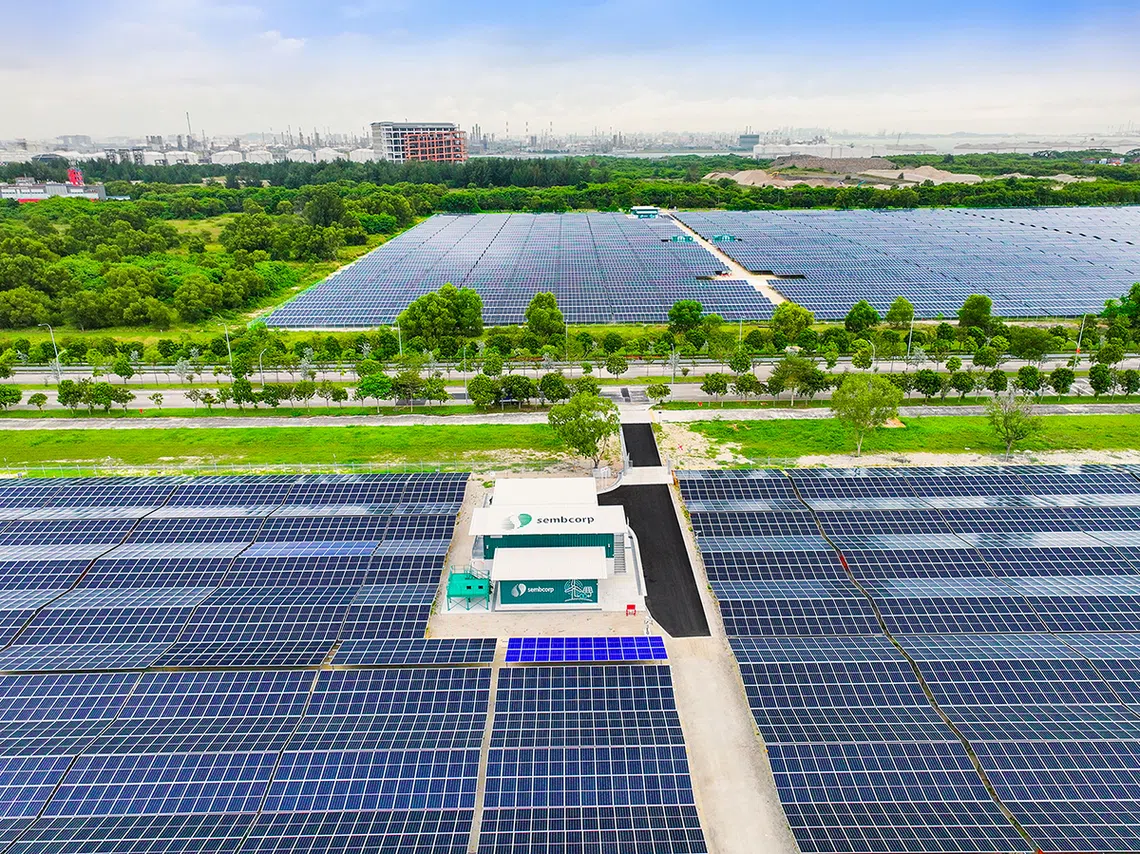Sembcorp partners EMA to test energy-storage system for grid stability
Company also unveils Singapore’s largest ground-mounted solar project – the Jurong Island Solar Farm

[SINGAPORE] Sembcorp Industries will work with the Energy Market Authority (EMA) to test its expanded battery energy-storage system on Jurong Island for its ability to provide inertia – a key factor in maintaining grid stability during sudden disruptions.
The company piloted a vertical battery-stacking solution at its existing Jurong Island energy-storage system (ESS), raising capacity from 285 megawatt-hours (MWh) to 326 MWh, without increasing land use.
Inertia is traditionally provided by rotating thermal generators. Singapore is testing advanced ESS as an alternative, as the country relies more on solar power and imported electricity.
The expanded ESS is one of two clean-energy projects on Jurong Island that Sembcorp unveiled on Monday (Oct 27).
Built across the Banyan and Sakra regions, the ESS started operations in December 2022, with the vertical stacking solution piloted this year.
The Banyan ESS can power the daily electricity needs of about 27,300 four-room HDB households per discharge.
Some key features of the storage system include a central control system that manages battery charging and discharging cycles in response to the needs of the national grid.
The battery energy-storage system also integrates battery management, power supply and distribution, monitoring, environment control, fire suppression and cabling systems.
“Energy storage plays an important role in enabling Singapore’s energy transition,” said EMA’s chief executive Puah Kok Keong. “In particular, battery energy-storage systems have the potential to provide a wide range of energy services, including frequency regulation for the power grid.”
SEE ALSO
Sembcorp plans to explore opportunities to deploy battery stacking across other sections of the ESS.
The energy and urban solutions provider also unveiled Singapore’s largest ground-mounted solar project on the island, the Jurong Island Solar Farm, with an installed capacity of 118 megawatt-peak.

Covering 60 hectares, it generates enough electricity to power about 33,200 four-room HDB flats annually while avoiding 60,106 tonnes of carbon dioxide each year.
The farm features inverters beneath solar panels to maximise space efficiency, as well as modular substations and electrical facilities that allow faster deployment and reduced construction lead time.
Koh Chiap Khiong, Sembcorp’s president and chief executive officer of gas and related services, said: “Jurong Island is a cornerstone of Singapore’s industrial ecosystem… As Singapore’s energy landscape evolves, we remain fully committed to supporting the nation’s energy needs.”
Decoding Asia newsletter: your guide to navigating Asia in a new global order. Sign up here to get Decoding Asia newsletter. Delivered to your inbox. Free.
Copyright SPH Media. All rights reserved.






